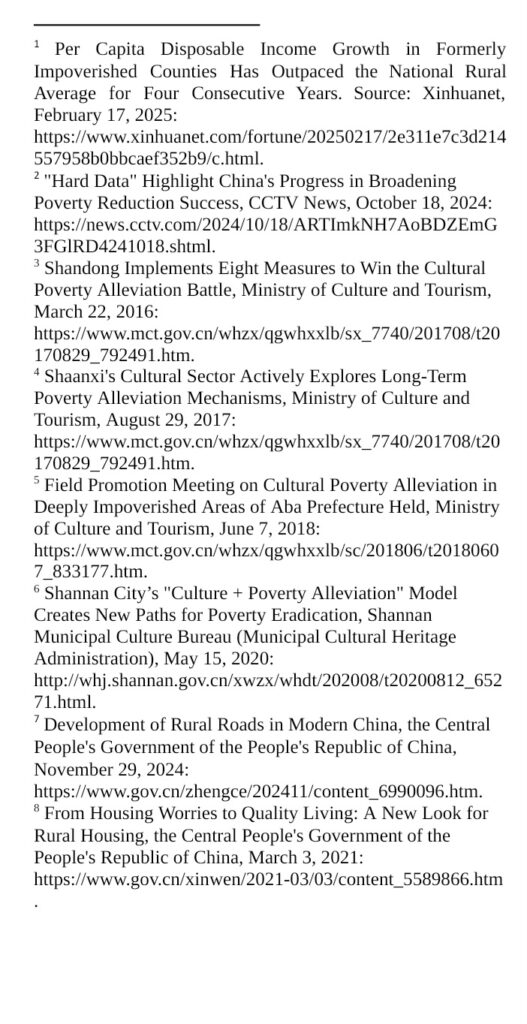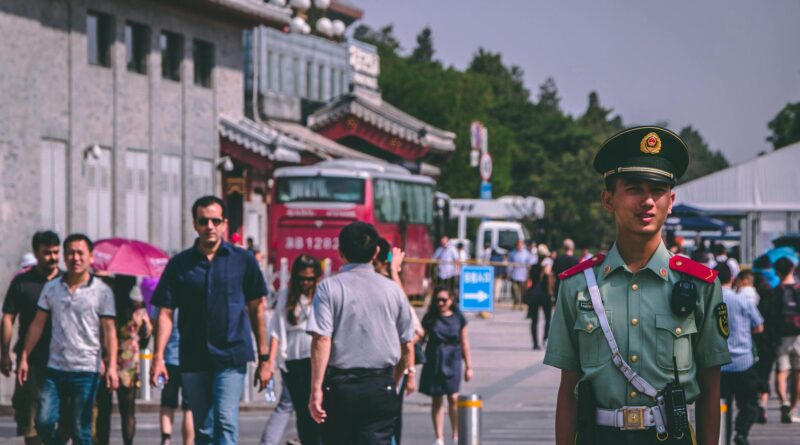Won the Battle Against Poverty: China’s Experience and Contribution
Since the founding of the People’s Republic of China and the launch of the reform and opening-up, successive central leaderships have placed a high priority on poverty alleviation. Especially since the 18th National Congress of the CPC, the CPC Central Committee with President Xi Jinping at its core has made poverty alleviation a bottom-line task for building a moderately prosperous society in all respects. In terms of top-level design, the CPC Central Committee has integrated poverty alleviation into the Five-Sphere Integrated Plan and the Four-Pronged Comprehensive Strategy, setting the poverty alleviation standard of Two Assurances and Three Guarantees. A working mechanism has been established with the central leadership making overall plans, provincial authorities taking overall responsibility, as well as city and county authorities taking charge of implementation. The CPC Central Committee and the State Council have formulated and implemented a series of unconventional policies, boosting poverty alleviation through fiscal, financial, and land support. This has led to the formation of a large-scale poverty alleviation pattern involving the government, market, and society working together. In terms of model innovation, China has transitioned from relief-based poverty alleviation to development-driven poverty alleviation, and then to targeted poverty alleviation. Under the leadership of the CPC Central Committee, the Chinese people have forged a path of poverty eradication that suits national conditions, successfully lifting nearly 800 million people out of absolute poverty and bringing about profound improvements in people’s lives.
I.China’s Remarkable Achievements in Poverty Alleviation
First, absolute poverty has been completely eradicated. From 2013 to 2020, the 98.99 million people in rural areas who were living below the current poverty threshold all shook off poverty, with an average of 12.37 million people per year. All 832 impoverished counties and 128,000 impoverished villages have been removed from the poverty list. The poverty headcount ratio dropped by an average of 1.3 percentage points annually. Among these achievements, 50.86 million impoverished rural residents in western China were lifted out of poverty, accounting for 51.4% of the national total.
Second, the income level and life quality for the impoverished population have been significantly improved. From 2013 to 2020, the per capita disposable income of rural residents in poor areas rose from RMB 6,079 ($843) to RMB 12,588 ($1745), an average annual increase of 11.6% and 5.3 percentage points higher than the national urban average in 2020. Significant progress has also been made in education, healthcare, housing, and drinking water access. In 2020, the nine-year compulsory education retention rate in impoverished counties reached 94.8%, while all impoverished rural residents had been covered by a three-tiered health insurance system including basic medical insurance, serious illness insurance, and medical assistance. Meanwhile, rural drinking water safety and enhancement projects have benefited 28.99 million people in poverty. Third, the eco-environment has been improved. By developing the eco-economy, improving the rural living environment, and relocating the impoverished from inhospitable areas to places with better economic prospects, there have been remarkable improvements in the eco-environment of poverty-stricken areas. Lucid waters and lush mountains have become their invaluable assets. Through the fight against poverty, China has increased the incomes of the impoverished and improved the eco-environment of poor areas.
Fourth, the achievements in poverty alleviation are solid and long-lasting. To ensure the sustainability of these gains, the CPC Central Committee immediately established a transition period (2021–2025) following the completion of the poverty eradication mission in 2020, aiming to consolidate and expand the achievements made in poverty alleviation in coordination with the extensive drive for rural revitalization. Across the country, efforts have accelerated to strengthen safeguards against relapse into poverty, firmly preventing any large-scale return to poverty. By 2025, per capita disposable income growth in formerly impoverished counties has outpaced the national rural average for four consecutive years.
II. China’s “Four Key Strategies” for Successful Poverty Alleviation
Key strategy 1: China has leveraged big data platforms to implement “targeted poverty alleviation”, enabling dynamic monitoring and tailored interventions for the impoverished. By accurately identifying poor households and establishing detailed records, authorities gain insight into individual needs and can design customized support measures. This forms a closed-loop mechanism of “precise identification (via big data platform), precise assistance (household-specific policies), and precise management (with dynamic adjustments)”, effectively preventing relapses into poverty and significantly enhancing the efficiency of poverty alleviation efforts. For example, the Ministry of Agriculture and Rural Affairs has set up a dedicated big data platform aimed at preventing poverty recurrence. It supports a monitoring and assistance system that tracks three key groups: those at risk of returning to poverty, those on the poverty threshold, and those facing sudden severe hardships. Village-level organizations and resident work teams promptly provide targeted support to households identified as high-risk.
Key strategy 2: China has built distinctive industrial clusters through “industrial support”, shifting poverty alleviation from short-term aid to sustainable growth. The CPC Central Committee has prioritized industrial revitalization, extending and enhancing rural specialty industry chains to better connect and benefit farmers. In poverty-stricken areas, efforts have focused on unlocking the multiple functions of agriculture and tapping into the diverse potential of rural regions. This has helped formerly impoverished counties establish distinctive pillar industries, opening new paths for farmers to increase income and achieve prosperity. For example, Mizhi County in Shaanxi Province has adopted a “farmer-cooperative-research” model through its millet industrial park, continuously innovating in the production of snacks and healthy foods. Over three years, the annual output value of local processing companies rose from RMB 720 million ($100 million) to RMB 872 million ($121 million), significantly boosting farmers’ incomes.
Key strategy 3: Through “cultural support”, China works to uplift both the cultural standards and aspirations of impoverished communities, nurturing homegrown motivation for sustainable development. Cultural support plays a crucial role as an essential tool for “motivating aspirations” and “empowering intelligence”, significantly boosting the intrinsic momentum of impoverished regions. This is achieved through comprehensive infrastructure development, industrialization of intangible cultural heritage, artistic empowerment, digital services, and other diversified approaches. For instance, Shandong Province mandated that each impoverished village construct a multi-functional cultural activity room of no less than 80 square meters and a cultural and sports plaza of 500 square meters, equipped with fitness facilities and audio-visual equipment. In Shaanxi Province, mobile stages and book trucks were provided to impoverished counties, alongside the launch of “Poverty Alleviation Cultural Tours”. Aba Prefecture in Sichuan Province has combined the “intangible cultural heritage + poverty alleviation” model to promote the Tibetan-Qiang-Yi Ethnic Cultural Industry Corridor project, utilizing resources such as Thangka and Qiang embroidery to develop distinctive industries. Furthermore, Shannan City Library in Tibet launched an online reading app offering 23,500 e-books, contributing to the “culture + poverty alleviation” model.
Key strategy 4: China has injected long-term momentum into poverty-stricken areas through infrastructure development, systematically addressing weaknesses, strengthening vulnerable sectors, and improving people’s livelihoods. Approaches include accelerating the development of infrastructure in poor areas, such as transportation, housing, communications, and water conservancy, to improve living and production conditions. In transportation, China has promoted the High-Quality Rural Roads initiative. By the end of 2023, the total length of rural roads reached 4.6 million kilometers, which is enough to circle the Earth’s equator 115 times, marking a 21.7% increase over the past decade. The network now includes 530,000 rural bridges and 2,222 tunnels, forming a comprehensive rural transport system linking counties, towns, and villages with farmland and households. In housing, two major policies, including rural dilapidated house renovations and relocation programs for poverty alleviation, have ensured housing safety for the rural poor. Since the 18th CPC National Congress, the CPC Central Committee has allocated a cumulative RMB 207.7 billion ($28.7 billion) in subsidies, helping 7.6 million households, or 24.93 million registered poor people, move out of dilapidated mud and thatch houses and into safe homes.
III. China’s Poverty Alleviation Experience Offers New Insights for the WorldAccording to the World Bank’s international poverty standard, China accounted for more than 70% of global poverty reduction during this period. Against the backdrop of persistent global poverty and a widening gap between the rich and the poor in some countries, China has won the battle against extreme poverty and achieved the poverty alleviation goal set on the UN 2030 Agenda for Sustainable Development 10 years ahead of schedule. This has significantly reduced the world’s poor population and “made a significant contribution towards realizing a better and more prosperous world as envisioned by the Agenda”. Most importantly, it has boosted confidence among Global South nations in overcoming poverty and offered fresh insights into the pursuit of shared prosperity and the acceleration of a global community with a shared future.
First, China embraces the people-centered development philosophy. For a country, especially a developing one, to achieve lasting poverty reduction, its ruling party must firmly place the people’s interests at the core of its governance. Only with such a commitment can there be sustained drive, clear direction, and strong institutional support for difficult and long-term anti-poverty efforts. This approach also ensures the creation of robust systems that promote fairness, inclusiveness, and shared growth, allowing the benefits of modernization to reach all citizens more equitably and turning the vision of a better life into reality.
Second, China sticks to the principles of target poverty alleviation and localized solutions. China carried out a strategy of targeted poverty alleviation. The approach has changed from generalized broad-brush policies to targeted measures based on specific conditions. Instead of being spread thin across multiple channels, assistance is now more accurately and efficiently directed to the poorest individuals. In many developing countries, a one-size-fits-all approach to poverty and social challenges often fails due to limited resources and complex social structures. China’s experience shows that poverty is a multifaceted issue requiring tailored strategies. Effective solutions must be grounded in national realities, and carefully designed according to different stages of development and varying levels of economic and social progress.
Third, China upholds the unity of common prosperity and green development. In practice, one of the biggest challenges many developing countries face is how to lift people out of poverty while preserving the natural environment. Throughout the poverty alleviation campaign, China has firmly embraced the principle that “lucid waters and lush mountains are invaluable assets”, prioritizing ecological conservation while actively fostering industries such as new energy, energy conservation, environmental protection, and green manufacturing. Today, China has become a major global player in wind and solar energy, achieving a win-win outcome for both economic growth and environmental sustainability. This experience demonstrates that safeguarding the ecological environment is a top priority for developing countries seeking sustainable poverty reduction. By leveraging their “green” and “unique” advantages, underdeveloped regions can turn ecological resources into a competitive edge and help more people move toward a better way of life.
Fourth, China emphasizes the combination of strong state leadership with broad social participation. Poverty reduction is a complex and challenging undertaking that requires coordinated efforts from government, markets, and society. China has highlighted the importance of unified leadership by the Communist Party, ensuring sound policy design and timely adjustments. Leveraging its tightly structured vertical organization and efficient implementation mechanisms, China has built a comprehensive poverty alleviation framework in which targeted programs, industry-based initiatives, and social participation reinforce one another. For developing countries, this experience underscores the crucial role of the ruling party or central government in tackling deep-rooted poverty. Only through strong political leadership, coherent incentive policies, and the mobilization of diverse domestic and international resources within and beyond the formal system can nations effectively address interconnected challenges of poverty.
Fifth, China pursues integrated urban-rural development. While China’s policies such as rural revitalization, targeted poverty alleviation, and demonstration zone construction appear to focus primarily on rural areas, they are in fact all grounded in the fundamental principle of promoting coordinated, high-quality integration between urban and rural regions. This approach underscores the importance of building an interconnected and mutually reinforcing system in which resources flow freely between cities and villages, environments are shared, and interactions are stable. For any country, particularly those in the Global South, achieving common prosperity requires a holistic strategy that advances rural revitalization while fostering deep urban-rural linkages as a cornerstone of national development.
Sixth, China prioritizes the development of a fair and inclusive social security system. In many countries, inequality and poverty often serve as root causes of social unrest. Throughout its fight against poverty, China recognized social insurance as a crucial component of targeted poverty alleviation to ensure that no household or individual was left behind. By providing essential support to the most vulnerable, it fulfilled the principle of “those in need shall be assisted, and the elderly shall be cared for”. At the same time, China adopted a comprehensive “package approach” to insurance-based poverty relief, strengthening a multi-layered social security framework that includes pensions, medical insurance, work injury insurance, unemployment insurance, and housing support. This has significantly enhanced social equity and inclusiveness. China’s experience shows that to achieve common prosperity, a country should establish a comprehensive, equitable, and inclusive social security system that leaves no one behind. A well-coordinated set of protections can meet the diverse needs of the poor and prevent relapses into poverty due to illness, disability, injury, or unemployment.
(QUAN Heng, Professor of Shanghai Academy of Social Sciences; ZHANG Guangting, Associate Professor of Shanghai Academy of Social Sciences)




